DI ONLINE






ThePhotographer: Laura Drury ARPS
TheImageTitle: ‘Washers and Nuts’
AbouttheImage:
Working within Jonathan Vaine’s Creative Development Group, we were tasked with producing a set of images using 'natural elements'.
I chose to use metal, so I raided my husband’s tool shed to see what I could find. I used a selection of old washers and nuts and arranged these on a piece of buoyancy foam, which had a great texture.
I then took the images into Photoshop and combined three images using different blending modes. I did quite a bit of tweaking using the curves adjustment layer and hue/saturation to experiment with the colours to give it a touch of pizzaz.

Editor DI ONLINE: Melanie Chalk
Contact: dionline@rps.org

PLEASE READ……. Not just this short piece but so many of the things committee members send out or communicate to members.
As I have said many times committee members spend many hours of their own time working so hard to deliver all that DI do. We endeavour to do this as professionally and efficiently as possible, always with the members experience in mind. But you have a vital part to play too – by reading the information thoroughly.
All too often we get members popping up with the stupidest of questions, which had they read the information they wouldn’t be asking. This eats in to volunteers’ personal time and is really frustrating. Ordering tickets for our events means you get the Zoom link in the confirmation, plus (often) follow up reminders too. Saving the links in a separate folder marked ‘Zoom links’ might mean you can find them when you need them, rather than coming through to us.
For our current projects there is a really good support page for each on Notion. This is nothing more than a web page with all the Zoom links & follow up recordings on there for the entire project. Just one place for everything you need and those who have booked get an email with the Notion link. Book mark it – this is your first port of call, not us when you cannot find the Zoom link etc
Google is your friend. So, you need to work out how to resize an image or ensure the colour space is correct for a DI competition entry – Google it! You get an instant result and far more information than any of us volunteers can do for you.
Knowing to whom in the RPS to direct your questions can be confusing. We often get queries that need to be directed to the staff team. An example here is your membership queries whether main RPS or something to do with a special interest subscription. We cannot answer them for you – you need to contact membership@rps.org
Please don’t think that in asking you to be a little less reliant on us that we don’t want to hear from members, as that is certainly not the case. We welcome your feedback and communications on any topic relevant to DI. We do listen and are prepared to modify or change things if we have got it wrong. I just need to try to protect the team from the excess of thoughtless emails, when members could, and really should, be helping themselves.
So…. PLEASE READ….. and thank you for reading this. Regards
Janet digchair@rps.org
if you ever want to email me
I was gifted a magazine subscription as a Christmas gift, Positive.News, “Positive News is the magazine for good journalism about the good things that are happening so if you are fed up with bad news but want to stay informed this is the publication for you” so says the promotional slogan!
We all need the positivity of such a publication as I think we are all going to need to find resilience in the challenging political landscape and the additional geopolitical tensions that we are experiencing as we start this new year.
This cartoon was shared with me and I thought it very apt!
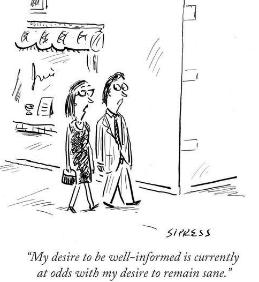
So I do hope that this DI publication cheers you, is uplifting and inspiring and is thought provoking, with lots of information to inform you, and events and workshops that you wish to participate in, with ideas to stimulate your mind and steer you in new directions. A great way to start a new year, nothing better than immersing yourself in new projects and in your photography as a form of mindfulness, it can be a great de-stressor too.
There are lots of opportunities for you to share your images by entering into the DI Competitions that are announced within these publications. There is a great team in place ready to receive your entries so let’s showcase that talent out there. I am always happy to hear from you with ideas and articles to fill DI ONLINE in 2025.
Melanie Chalk Editor DI ONLINE dionline@rps.org

Submission to the DI Print Portfolio 2025 closes 6 February 2025
It is easy to enter :
• Just post 3 x A4 prints.
• Plus submit the 3 digital images using PollUnit.
This is all clearly explained by reading the Rules, link below.
The Portfolio contains the top 30 images selected. The members whose work is selected receive a copy of the Portfolio 2025, but every entrant receives a copy of the printed catalogue.
Read the RULES and more information on the WEB PAGE
You have to be in it to win it

Our annual DI comp has been reimagined for 2025. We return to the 3 classes of Open Colour, Altered Image and Open Mono. These will roll from February to August with 10 images going forward from each class to the Final in October.
For more information and to read the RULES go to the web page https://rps.org/groups/digital-imaging/di-competitions/digital-imaging-competition
Entry submission will be via this web page and will open on 1 February 2025.
Open Colour
Open submissions
Close submissions
1 Feb
1 March
DI Online announcement 17 March
Altered Reality
Open submissions
Close submissions
1 May
1 June
DI Online announcement 17 June
Open Mono
Open submissions
Close submissions
1 Aug
1 Sept
DI Online announcement 17 Sept
The latter two classes have been timed so that members engaging with the Mono and Altered Reality projects will have inspiration and new work to enter.
https://rps.org/groups/digital-imaging/di-workshops/new-projects-and-other-workshops-2025
Any questions please contact DIprintcomp@rps.org
I was recently notified that I had come third in The Societies SINWP Bird Photographer of the Year 2024 competition. With over 2,300 entries submitted from around the world I was delighted to achieve this award!
My image, 'Great Grey Owl Landing in Snow’ was taken during a photography holiday to Finland with Natures Images. It had been a wish of mine, for a number of years, to see owls in the snow in their natural environment and I decided to take the leap and book the holiday. We initially stayed in northeast Finland near Kuusamo, not far from the Russian border. That morning we travelled to an area where the owls might be found and waited! The owl eventually flew down a number of times to take dead bait. On this occasion I managed to take a few shots of it approaching and landing. We spent nearly an hour at this location and it was wonderful to see this wild bird in its natural environment against a snowy background. Taken from a raised path, where a step to either side would have resulted in sinking into deep snow, the shot was handheld using a fast shutter speed to capture the action.
Camera & settings: OM-1, 150-400mm TC at 500mm. 1/1600s at F5.6 ISO 500
Link to the SINWP competition Congratulations on your success Maggie.

Each month we welcome and list all new members, here are those who have joined in December and January. Let me take the opportunity to welcome all those listed here. Sometimes, for whatever reason, we might be also welcoming a ‘Re-Joiner’ but we welcome you all.
There is lots of information within these pages about future events, forthcoming workshops, competition results, as well as links to the DI Webpage. This is where you will find more detail as well as contact information.
Ian Clements
Tim Dann
Michael Farley LRPS
Cathy Holgate LRPS
Matt Hosking
Jaroslaw Jordan
Richard Kenny
Adrian King
Robert Kirby-Wilson
Allen Mikulski
Gary Milo
Beverley Morgan
Jill Riggs LRPS
Tracy Ross LRPS
David Simpson
Matthew Thomas
Pia Thommes LRPS
Maggi Tillotson ARPS
Naomi Ward
Andy Wilson
Graham Wishart ARPS
Devon
London
Surrey
Hertfordshire
Lancashire
Surrey
Northamptonshire
Scotland
Northamptonshire
Scotland
Somerset
Surrey
Dorset
Ayrshire
Somerset
Merseyside
Cheshire
East Sussex
London
Suffolk
Surrey

I believe I may be one of the most recent recruits to the DI Committee having put my hand up in the summer of 2024. It’s been a bit of a whirlwind since then having initially taken on the Print Portfolio work with a bit of a helping hand to DIGIT content. Later in the year I began supporting the new LRPS support group and have just added the Digital Imaging Competition to my portfolio of work. I love being able to support my colleagues on the committee in delivering a great experience for our members.
I’m a relatively recent ‘proper’ photographer taking up the hobby when I retired in late 2014. I joined my local camera club, took a course at night school and joined a couple of photographic groups and started to point my camera at lots of varied stuff.
I entered my club’s competitions, and my first successful image was “Lions”. This was shot on a photo walk in Liverpool and was an early venture into portraiture – of sorts. Once I had tasted a bit of success, I started to enter more competitions starting with Federation competitions and BPEs achieving my first BPE star in late 2018 and getting to 3 stars by late 2020.

During this time, I was still shooting a great variety of genres and styles, developing my skills and knowledge every time I pressed the shutter. My main influence during this development period was Nature and especially Africa. At a local photo show, I sat in on a talk by Ann and Steve Toon, soon to be included in an article in DIGIT, and my photographic world changed. At that time in 2017 Ann & Steve did photographic safaris to Southern Africa. After the talk I went home, mentioned it to my wife, and we booked our first photographic safari. My wife wasn’t a photographer but after meeting Ann & Steve she was as hooked on photography as I was so off we went to South Africa for a two venue safari taking in the Chobe River and Zimanga game reserve.

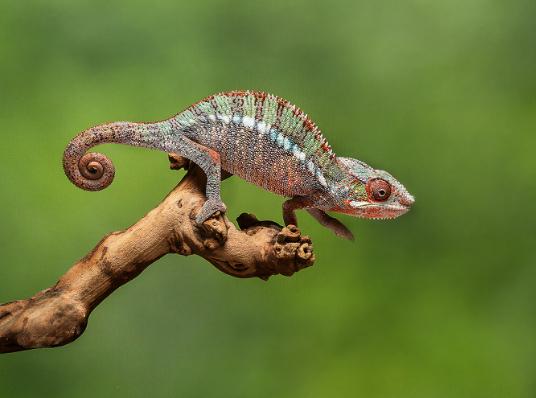

It was on this trip that a fellow photographer suggested I tried for an RPS distinction as he had just got his ARPS. The seed was planted.
When I wasn’t engaged in exotic trips abroad I was still keeping busy and worked towards the PAGB CPAGB which I gained in 2019 and DPAGB in 2021. It was in my D panel that I introduced my most successful image to date with the Vulture Dispute
My RPS journey started after our second African safari in January 2019. I went along to a few North West region events and I was impressed by the friendliness and knowledge of the volunteers there and decide to join. Being a bit cocky I initially made a decision to go straight for my A but at the assessment I felt my prospective A panel wasn’t strong enough, so I decided to go for an L first. For me that was the right decision and I gained my L in prints in October 2019.

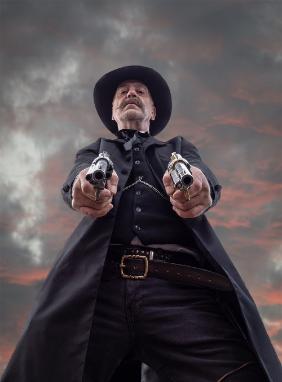

After gaining my L I went just a little bit competition crazy. I joined FIAP, PSA, GPU and devoted almost all my efforts to international competitions as well as working towards my ARPS. After several safaris with our now best friends Ann & Steve I had a good stock of nature images but I was also doing quite a bit of portrait work especially with my favourite model Graham Currey of Session Days fame. I had worked with Graham a lot since my very early days. He is a very knowledgeable chap and from Club visits to studio sessions with him we developed an excellent working relationship. With this in mind, I attempted a very risky choice for my A panel in Applied Portraiture of 15 images of just Graham. Needless to say this worked and in November 2021 I got my ARPS.
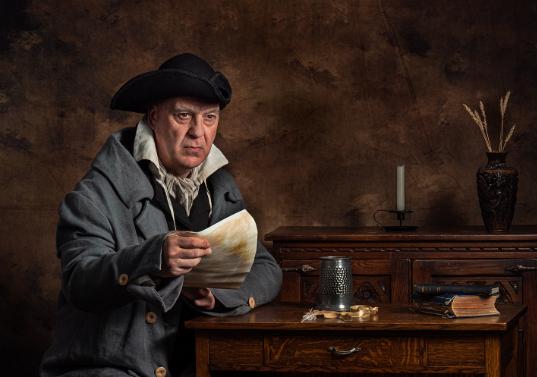



Since gaining my A and a handful of other distinctions I have stopped entering the mass of competitions that once filled my days and now a take a more considered approach to my photography. I still get that buzz when I’ve captured ‘that’ shot and long may that last. I still enter some competitions although I must admit to most of them being DIG competitions. I am lucky enough to be the current holder of the Raymond Wallace Trophy after my win in the digital image competition last year.
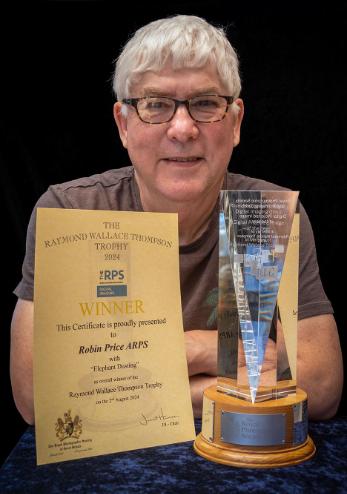

I wonder what comes next. My wife and I have just got back from a bucket list trip to India so lots of images to process when DI work and my camera club work allows. Perhaps a photo tour of my travels for DI may be in the pipeline.
Robin Price



The popular DI monthly Comp has start ed again from January 2025. There are a few minor changes to how you submit and vote, so do please read the web page . The closing date is January 23rd, and voting is from the 24th to the last dayof the month. Winning entries will be shown in this publication.
All information on our DI Monthly Competition can be found HERE
All information on all our DI Competitions can be found on our web site.
DIGITAL IMAGING WEBSITE
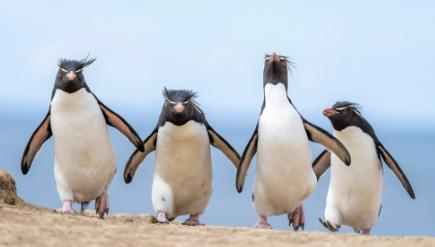
Like many others, I turned to creative hobbies during lockdown. When Alex Hare and Lizzie Shepherd offered an online course on making small concertina books, I jumped at the opportunity. Equipped with the recommended supplies and my childhood memories of crafting rockets from washing-up bottles, I joined the Zoom session. By the end of the day, I had my first handmade book. It was a little wonky, but entirely my own creation—and I was hooked. That first book ignited a passion. Soon, I began curating image sets that conveyed cohesive stories. This approach gave my photography a new dimension, as I realised that viewing images together, rather than as isolated pieces, lent them greater depth and meaning. I experimented with Japanese stab-bound books, lay-flat concertinas, and Drum Leaf Binding - my favourite so far as it allows for panoramic spreads or even full bleed printing. Each style brought unique challenges and rewards.
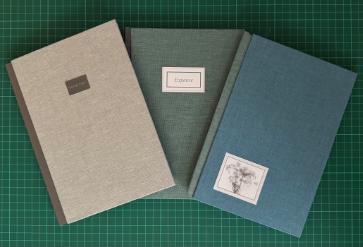
As I began working on projects, I sought new ways to organise and showcase my images. While handmade books are a joy to create, their size can be limiting. This led me to explore the Lightroom Book Module, and I used it to design a 30x30cm hardback book inspired by a couple of visits to Venice. Looking back, I realise I wasn’t selective enough and struggled to “kill a few darlings.” However, this experience taught me that a book is more than a collection of photos—it’s a narrative, requiring rhythm and flow to truly engage the viewer. I started to see the book not just as the project’s final output but as an integral part of the creative process, shaping my approach from the very beginning.
The Lightroom Book module was relatively easy to use and the integration with Blurb made it a simple process to send the final book to the printer without worrying about colour conversion, bleed and all those other technical concerns. I did, however, find it limiting if you want to add more than basic text or be a little more creative with layouts. This prompted me to experiment with Affinity Publisher. After some YouTube tutorials and an RPS online course, I now find it an invaluable tool for designing handmade books, zines, and printed works.

For the recent DIG Books & Zines project, I ventured into zines for the first time—essentially mini books that offer a compact, creative format. I have found this an excellent way to prototype larger ideas. My zine, Ferocity and Grace, served as a test run for a more ambitious 70+ page book that I’m currently developing. This approach allowed me to experiment with concepts in a cost-effective way, providing invaluable insights for refining and advancing the next stage of the project.

Moving forward I want to learn more about design. The size, shape, and materials of a book are as important as its content. Choosing the right cover image, fonts, & paper weight can transform a book into a tactile and visual experience. I have also started weaving in text—either my own writing or carefully chosen quotes—to enrich the narrative. The following images show the ‘Flow’Zine spreads



Much like photography, bookmaking can be as simple or as intricate as you choose. It can remain a casual hobby or evolve into a deeply absorbing and complex craft. There’s always something new to learn for those willing to dive into the nuances of book printing. Yet, even with minimal effort, you can achieve highly satisfying results. My advice? Just start. While resources like the excellent 2024 Books and Zines project provided valuable guidance, there’s no substitute for learning through trial and error.


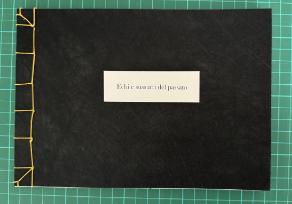


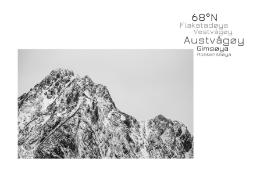
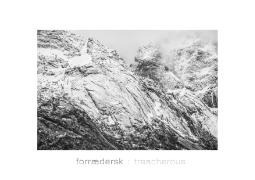
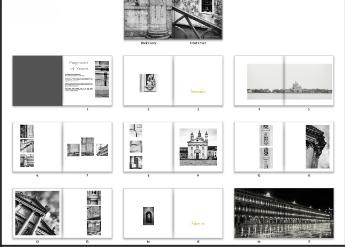

Quietude layout, above and Quietude cover and font example, below

Incorporating bookmaking into my skill set has significantly enriched my photography. It’s made me more thoughtful about the stories I want my images to tell and more deliberate in how I compose and present them. It’s also encouraged me to be bolder and more experimental in my approach.
So, why not start your own? Learn from others, but more importantly, learn from your mistakes. You might just find that, like me, bookmaking changes not just how you present your work, but how you create it. One final thought: I recently heard a podcast discussing whether our images could be left as a legacy. As the presenters wisely noted, a well-crafted book is far more likely to endure than countless photos stored on a password-protected hard drive.
Lindsay Southgate, ARPS www.lindsaysouthgate.com Instagram:
lindsay.southgate
Each month we will feature an International Member and learn more about them and their photography. Here Janet Haines poses questions to Dr. Martin Wale LRPS who lives in Canada.
Janet. What prompted you to move from the UK and were you a RPS member prior to going to Canada?
Martin. My wife and I came to Canada because I was offered what sounded like a dream job, with removal expenses, in a great location. We’d come to the conclusion that we would never be able to afford to retire somewhere we’d really like in the UK, so I had been building my training, experience and contacts with a view to a move. We started in 2008, just in time for the credit crunch, so not everything was good. I never subscribed to the “grass is greener” - it’s just different grass, and there are up- and downsides of any such move.
We left partly because the UK is just so crowded. We live on (or near) Vancouver Island, off the West Coast of Canada. The Island itself is about the same size as England, with a population of about 900,000. There are large areas where there are few people.
I really miss the historical depth of the UK. Here, non-indigenous history isn’t more than a couple of centuries and many of the buildings are wood and thus relatively short-lived. As a photographer this is makes a radical difference. The other aspect relates to landscape - here on the West (“Wet”) Coast, it rains for three months in the winter but then the summers are warm and often without rain for weeks, although these days we get smoke from wildfires. If you climb in the UK for even 300m then you’ll usually be rewarded by a decent view. Here, you’ll start surrounded by trees; after two hours of hard climbing you’ll still be surrounded by trees and probably not able to see very much at all.
I started taking photographs when I was at school because I can’t draw - I wanted to draw natural history. So I started in the Phot Soc. at school but read widely and was largely self-taught. I came to LRPS after university and after higher professional training by doing City & Guilds in photography - this was great, giving me systematic taught and practical experience, some exposure to the principles of the main genres, and confidence to try things out. I’ve always been an early adopter. I still build on that framework now.
Janet. What are the downsides to being an international member as opposed to a UK one?
Martin. The main issue is that so much of the RPS’s activity is UK-based and very introspective. I’ve done some of the short courses as an international and have thoroughly enjoyed them (even if the start is 3am). These days my inbox fills with emails from Billetto for events which are 7000 miles away (which is frankly just irritating after a while).
Janet. Do you belong to a camera club in Canada and if so do you see much difference in photographic styles there as opposed to the UK?
Martin. Apart from at school I’ve always been busy and often worked out-of-hours or on-call (I’m a doctor). Clubs were always difficult to fit in - even the regular meetings, let alone carving out sufficient time to do assignments and competitions. So, since school I’ve never been in a club. My style is my own, although I’ve picked up bits from other photographers or from exhibitions. Key influences are Heather Angel, Don McCullin, and latterly Robert Harvey (his advice that “if your feet aren’t wet then you’re standing in the wrong place” also works for natural history). Most of the photographs I shoot are of natural subjects, but the technology is amazing now and I can do things I’d always wanted to do, particularly incorporating motion. Since 2017 I’ve run my own consulting business, so can work as I want to, and finally (theoretically) can make time to take and work with my photographs.
Janet. Thinking about your own photography has being in Canada altered what you like to shoot?
Martin. We moved to Canada for space, outdoors, and activities such as kayaking. My photography followed along the same lines - landscape and natural history. Since 2014 we’ve lived part of the time on a small, steep, heavily forested island in the Salish Sea, with a year-round population of about 850. This has given me the opportunity to get to know a small area of forest and sea front very well. This is not the single visit of the tourist - it’s about observing the natural environment and its inhabitants, learning about how they live, and observing changes with the seasons and years. I was also President of a small environmental non-profit (see www.simres.ca ) for five years, giving me a particular interest in whales. We equipped four (initially) of our more tech-savvy observers with Canon SX70 cameras, which is a 20MP camera with a 65x optical zoomthe results were very gratifying, and we’ve since extended the experiment. This is something I’d like to write up when I have time.
Janet. How do you feel the RPS or Digital Imaging group could improve things for international members?
Martin. I’ve thought about this a lot. Currently, if I mention the RPS to almost anyone here, it’s met with blank looks, even from the photographers. I’d like to reply, separately, perhaps as a letter for publication.
Janet. Please do show us your 3 own favourite images and tells us why they are important to you?
Martin. The humpback whale is a whale called Heather, and at the time she was teaching her calf (out of shot to the left). This has been sharpened (which I believe is almost standard practice)

The second is a Bald Eagle. This summer, I noticed a bald eagle swimming - a slow, heavy butterfly. I wondered if it was in trouble, but it had caught a fish which was too large to be able to fly with it. It took about 15 mins to swim to shore, so I had time to get some kit. This is a recent change in behaviour - eagles taking much bigger fish at sea, and swimming back with them, but I’ve now seen it three times. The shot was taken not long after it landed its catch - the bird looks very bedraggled and was drying its wings.
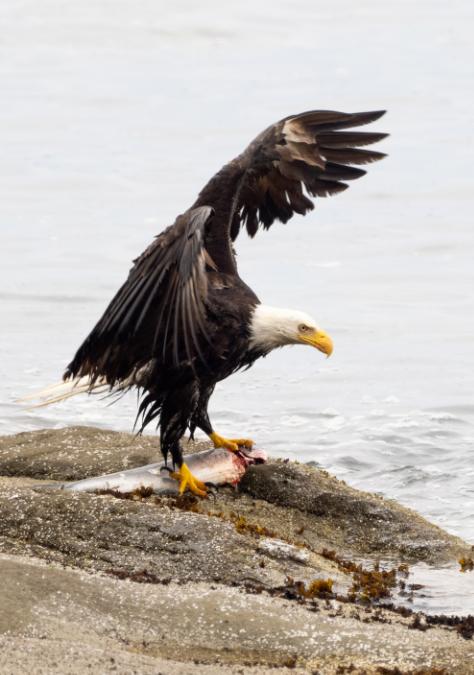
The island has Western Terrestrial Garter Snakes which fish for prey in the shallows. The photo below was one of several we shared with David Attenborough’s team, and resulted eventually in a team coming here for a few weeks to photograph them for the programme - https://www.bbc. co.uk/programmes/articles/4z6zmmFH60dKc1fz76rX0NG/coasts-what-to-expect
Dr Martin Wale


As from January 1st renewal of your DI membership subscription has changed very slightly.
From 2025:
A Full DI membership will be £18. (This includes printed DIGITs)
A DI Online membership is £8 (This includes all the same content but everything is online)
Renewal of your DI membership aligns with your RPS membership renewal date.
The full DI membership has been priced to reflect the print and postal costs of DIGIT which are forever increasing. For 2025 this is estimated to be £10 p.a. per subscribing member, but the committee will have to review this towards the end of 2025 and adjust for 2026 if necessary.


Sunday 23 February
Online – two sessions
SESSION 1
10.30 AGM
11.30 PRESIDENT SIMON HILL HONFRPS
11.45 BREAK
12.00 DI PRINT PORTFOLIO 2025 – AWARDS
SESSION 2
14.00 VANDA RALEVSKA ‘LOOKING BEYOND A SINGLE IMAGE’
AGM web page is HERE where you will find the links to register for the two sessions.
AGM – do please make an effort to attend this session as it is the only time we get to give our members an update about the group and answer any questions you may have. It provides a succinct overview of all we do, plus the health of our finances. We also need you to vote on various issues so that we have your endorsement for the committee to act on your behalf. It is important to us to have as many of you there as possible.

At 12.00 we will invite our three print selectors to join us for the annual Awards of the DI Print Portfolio. You will see the top 50 images, 30 of which make it into the Portfolio. Our selectors will give comments on many of the top 30. Whether you have entered the Portfolio or not it is always good to see one another’s work and see what our DI ‘exhibition in a book’ looks like for 2025.
The Awards is part of the AGM session 1 – book HERE
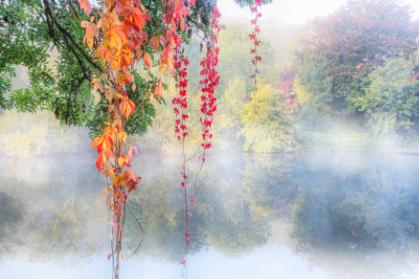
We all evolve along our photographic journey. We shift our focus to different subjects, techniques and equipment.
In her presentation, Vanda will focus on her journey from capturing single images, through creating collections and series, to working on short and long-term projects.
This is the AGM Session 2 – book HERE
We hope you will join us live for the AGM sessions, but if you miss anything all sessions will be recorded and links sent to those who register.

Throughout 2024 three groups of members worked on a creative project with Jonathan Vaines. Subjects were set as challenges and techniques were taught.
A whole selection of the images, which some of the participants chose to be shown can be viewed in the page turning software ISSUU HERE
I am just including a small collection of these very creative images over the following pages, and hope it will make you curious and entice you to go and look at the whole collection entitled Creative Expressions.




Love your curves and all your edges by Belinda

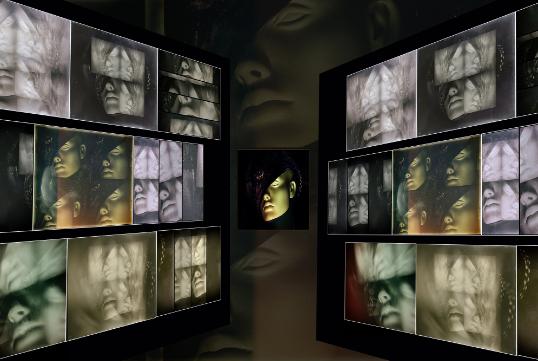
Are you intriqued to see more?
If so CLICK HERE
Find out how to start – or continue – your Distinctions journey:
Each of the pages below includes handy links to guidelines and genres for distinctions, assessment dates, and a “how to apply” document:
• Licentiate (LRPS) – the process for LRPS has changed – see below for more details.
• Associate (ARPS)
• Fellowship (FRPS)
The LRPS application process has been changed and now uses an online application system for digital submissions – no more prints or books will be assessed.
There’s lots of supporting material and application forms on the RPS website now. Take time to look around and digest the information if you are interested. We also offer an LRPS Support Group to our members; see https://rps.org/groups/digital-imaging/ lrps-support-group/ for more details.
The Photobook genre has its own special guidelines and submission process (as opposed to an ARPS or FRPS submission in book form). You can find out more here: Photo books. You might also like to see a talk hosted by Stewart Wall which is both informative and inspiring.
Some genre-specific hybrid Advisory Days for both Associate and Fellowship levels at RPS House are bookable – limited spaces; book here.
To help you prepare, you can request a one2one portfolio review – an online session with a panel member appropriate to your genre/distinction. See this page for more information: How to book a one2one. Note: this programme will restart in February (but not bookable at time of writing)
There has been some confusion over what happens next – someone from HQ will find you an advisor and put you both in touch to arrange a date and to send images/ presentation plan. This can take time depending on how many volunteer assessors in your genre or at your level are available, and you are advised to make your request at least 4 months before an assessment.
Some regions are offering Advisory Days online and in person. Look out on our Facebook group or for broadcasts from your regional group for details, or use this link https://portal.rps.org/s/ event-listing and click the ‘Advisory Day’ button at the top.
You can generally attend as an observer if you aren’t ready to step up yet (usually advertised a week beforehand on the Facebook group). In addition, some Chapters and Regions offer online Distinctions Study Groups. You can find these by searching the RPS website.
You can send your booking forms to distinctions@rps.org or by post to head office. As for advisory days, you can sign up to observe an Assessment Day (in person or online) tickets for assessments – currently free.
And don’t forget, as well as projected and printed images, you can also apply for a Film, Digital and Multimedia Distinction at any level, and also a written Research Distinction: Film And Research. The Research page on the website has been updated, and more changes are scheduled for other pages.
If you missed any of the Distinctions Live talks, you can catch up here. (Also accessible via the RPS Distinctions channel on YouTube.) This talk from Stewart Wall gives advice on how to gain your Licentiate.
The Facebook Group RPS Distinctions **Official Group** is still growing after 3 years, with almost 5300 members. It includes news from HQ, links for observer places at assessments, and posts celebrating distinction successes to inspire you. It’s a civilised venue to ask questions, share your successes – and disappointments – and ask for critique or expert advice on your proposed portfolio.
If you aren’t sure which genre or level to apply for, you can post 6 images (plus your Statement of Intent if appropriate) and request moderator advice.
Accolade, which celebrates Digital Imaging members’ distinction successes, is useful for insight into the process in many different genres and at all levels. The last Issue 14 of Accolade has been published and issue 15 is in the works. (back numbers also available on the DI Website).

This month I am just diverging from the subject of AI. We have recently enjoyed some varied opinions on the subject and we will return to it in the February issue. Many of you will by then have watched the talk/discussion with Joe Houghton on AI - What’s allowed! You may have further opinions to offer and might be willing to send me comments for publishing in future publications?
It is a real dilemma for photographers and when they start to process images for competitions and salons are unsure about which tools are safe to use, as updates seem to be happening at such a pace.
So here is my contribution to Snapchat this month,
I recently read an article by Simon de Burton entitled,’ No more airbrushed images, why we love vintage cameras’. He writes,
“It had to happen. Just as clockwork watches survived the threat of battery-power, and CD sales have been eclipsed by the demand for outdated LP’s, so analogue cameras are making a comeback.”
I cannot share the link to the actual article, as it is behind a paywall, but I will quote some pertinent points. He suggests analogue cameras are making a comeback! This is similar to the revival of vinyl, are many wanting to recapture the nostalgia of their youth or is the sound produced of better quality? So could nostalgia also be a significant reason for the resurgence of film cameras ? Nostalgia is not only about reliving the past but also about romanticising a simpler time in our lives, we all remember the slower pace of our youth, and some of us yearn for that uncomplicated environment, although we may be viewing it wearing rose tinted specs!
“In many ways, people are pining for that nostalgic look that comes from using film, the way the light is captured and even the way the pictures can be slightly imperfect”
‘’Even professionals are rewinding to the age of film cameras and a trend is growing among couples to have their “special day” captured exclusively on analogue cameras.”
One London-based wedding photographer Kate Bunny Hampson photographs weddings using only analogue cameras, some of which are more than 60 years old.
“In my opinion, film just gives far better colour, tone and depth — and it has created a huge demand for this sort of wedding photography,” she says,
This is a bride talking about why she was choosing an analogue wedding photographer,
“I have always loved film photography and, looking at Instagram and other social media feeds with their perfectly airbrushed, filtered and edited images, we realised we just didn’t want that.
“In many ways, people are pining for that nostalgic look that comes from using film, the way the light is captured and even the way the pictures can be slightly imperfect.”
The article highlights that the return to film photography needn’t be expensive. You might even have kept your film camera at the back of the cupboard, you felt sure that one day it would come back into fashion.
“One of the joys of film photography, however, is that a good quality vintage camera can be found for relatively little money.
“As little as £100 will buy a Pentax K1000, a mid-level camera that will take a full range of Pentax lenses”
“From there, £300-400 will get a Nikon F3, once beloved of professionals, while a legendary Leica M — which was introduced in 1954 and is still going strong — costs around £2,000 second-hand and is superb for street or travel photography.”
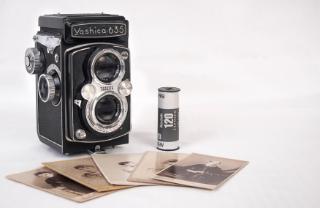
So my question to you, is, are you going to return to Film Photography? Answers on a Postcard please, and of course posted to me!
Melanie Chalk Editor



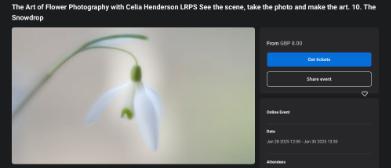
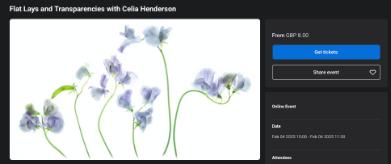
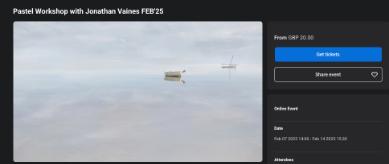

CLICK ON THE IMAGE TO SEE THE DETAIL ABOUT EACH EVENT
VERY ADVANTAGEOUS PRICING MAKES DI WORKSHOPS GREAT VALUE AND A TERRIFIC MEMBER BENEFIT
ALL BOOKABLE VIA BILLETTO GO HERE TO SEE THE WHOLE RANGE OF DI WORKSHOPS
DO BOOKMARK THIS LINK TO RETURN TO AS MORE WORKSHOPS ARE BEING ADDED FREQUENTLY
DO TELL US IF YOU HAVE A PARTICULAR SUBJECT/GENRE OR SKILL THAT WE COULD COVER WITH A WORKSHOP
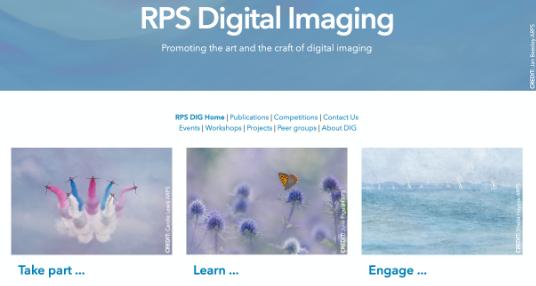
The members-only link for the DIGIT Archive is to be found in the email message announcing this newsletter. The RPS Digital Imaging constitution can be downloaded HERE. For everyone’s convenience, we include a list of shortcuts to the main Digital Imaging pages at the end of each Broadcast.
You can subscribe to our email Mailing Lists here to hear new announcements: Garden & Plant Photography Workshops
